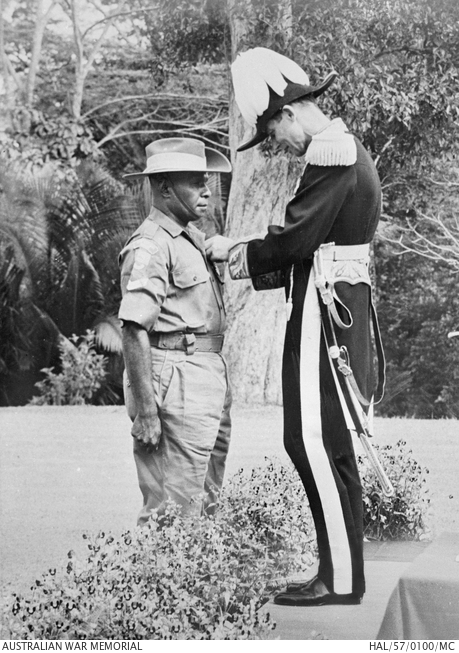WARNING: Aboriginal and Torres Strait Islander people should be aware that this article may contain images, voices and names of deceased persons.

At the outbreak of WWI, the 1910 amendment to the Defence Act 1903, Section 61 Clause H stated that persons who are not substantially of European origin or descent shall be exempt from service in time of war. This in effect meant that Indigenous Australians were unable to provide military service, although many still did. This restriction was not fully lifted until 1949.
The reasons for Indigenous Australians to join the military to fight in WWI would have been similar to their European descent counterparts: adventure, mateship, or a sense of duty to name a few. But for Indigenous Australians, being a soldier also meant equal wages with equal service conditions, two things not widely available to them at the time. Unfortunately, the conditions for returned servicemen were not equal, with Indigenous Australians not being granted land entitlements like their European-descent counterparts on return from the war. When they returned to civilian life, they returned to discrimination and prejudice.
By late 1917, one conscription referendum had already been lost and Australia needed further recruits to reinforce the Allied forces in Europe. Restrictions were slightly eased, allowing Indigenous Australians with one European parent to join.
Whilst it is difficult to be precise, below are best estimates of Indigenous military representation from the Boer War to the Vietnam War:
Boer War – 70.
WWI – More more than 1000, but it should be noted that ethnicity was not listed on service records so it is difficult to accurately estimate the number.
WWII – Estimated at up to 7000, including 745 Indigenous Australians serving in the Torres Strait Light Infantry Battalion formed specifically to defend the island group. There were also various other specially raised Indigenous units.
Korean War – At least 80.
Malayan Emergency – At least 70.
Vietnam War – Approximately 500.
It is understood that many more Indigenous Australians may have volunteered to serve but were rejected due to their ethnicity.
Indigenous Australians performed well in battle, and many were mentioned in despatches and awarded the military decorations such as the Distinguished Conduct Medal (DCM) – one medal lower than the Victoria Cross in order of precedence – and the Military Medal (MM) which sat below the DCM. Present records show four Indigenous Australians were awarded the DCM and around fourteen were awarded the MM.

In the 1980s, three Army Reserve regional force surveillance units were established with workforces largely made up of Aboriginal and Torres Strait Islander peoples. These were NORFORCE, the Pilbara Regiment, and the 51st Battalion Far North Queensland Regiment - all of which remain part of the Order of Battle today. The establishment of the units aimed to use the traditional knowledge and skills – bushcraft, tracking, and survival skills – of the Indigenous populations of northern Australia to best effect in defence of the nation. The motto of the Pilbara Regiment is 'Mintu wanta', which is a Western Desert Indigenous phrase meaning ‘always alert’. It is the first time that an Indigenous language has been incorporated as part of an Australian Defence Force regimental crest.
Indigenous Australians continue to be a vital part of our diverse and inclusive workforce in the military. We all serve together in defence of this great nation as our ancestors did, for our children and their children. We are all voices for generations.










Where is the evidence that supports the estimated amount to the claim of "WWII – Estimated at up to 7000, including 745 Indigenous Australians serving in the Torres Strait Light Infantry Battalion formed specifically to defend the island group. There were also various other specially raised Indigenous units." in this post ?
I have not found or at least seen in the years I have looked into this a number anywhere near the estimated amount of "7000".
This amount is almost double the estimated amount which is quite a large estimated increase of the number of Aboriginal people that served in WW2 from multiple different sources, statistics, history books, learning material and educational courses that I have at least found or been exposed to so, I would like to know where the information to get this estimate originates from or the material used to determine the said estimate ?
You may have missed the Bibliography section (click the plus symbol to drop down); which includes a number of sources including: Australian War Memorial | Indigenous service in Australia's armed forces in peace and war
The Second World War section at the above page discusses the current estimates and ongoing research.
Hope this helps.
Regards,
MAJ Stokes
The Cove